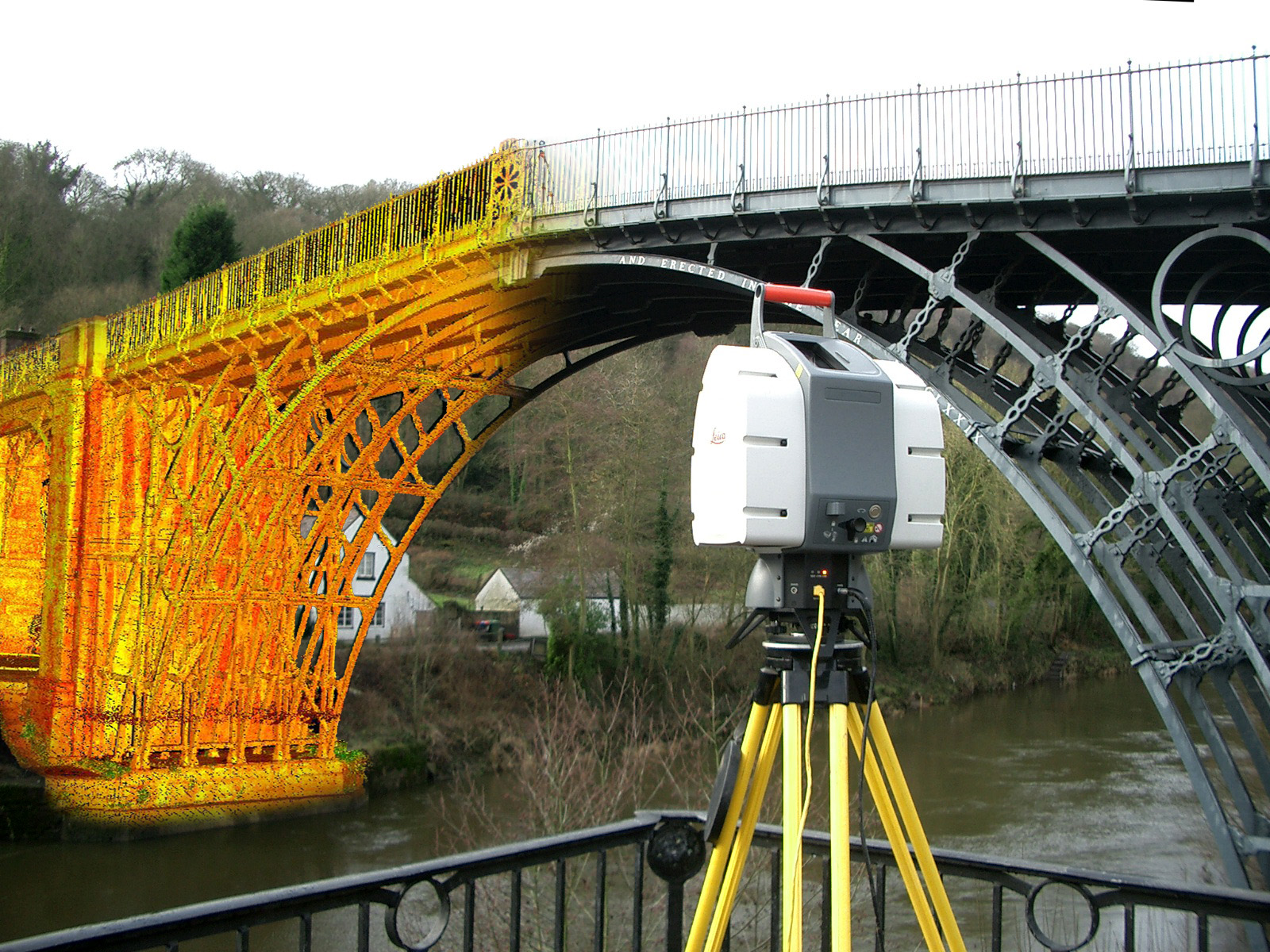The Definitive Checklist for 3D Scanning in Construction
Wiki Article
The Future of Accuracy Measurement: Recognizing the Role of 3D Laser Scanning Modern Technology
The landscape of precision measurement is developing with the arrival of 3D laser scanning innovation. This innovation guarantees boosted accuracy and performance across different sectors. As markets start to welcome these innovations, the ramifications for task management and execution come to be increasingly considerable. Nonetheless, the transformative effects of this innovation expand beyond simple numbers and dimensions, meaning a broader shift in exactly how specialists approach their work. What might this imply for the future?What Is 3D Laser Scanning Innovation?
3D laser scanning modern technology is an advanced method used to capture accurate three-dimensional measurements of physical items and settings. This modern technology utilizes laser beams to gather data points, which are then refined to produce in-depth electronic depictions of the scanned topics. By releasing thousands of laser pulses per second, 3D laser scanners can accurately record the shape, size, and spatial relationships of various surfaces.The procedure typically includes positioning the scanner at different vantage points to capture comprehensive data. The resulting point cloud, a collection of millions of information factors, can be examined and exchanged 3D models. Applications of this technology span numerous areas, including style, heritage, and design conservation, where it helps in paperwork and analysis. As a non-intrusive method, 3D laser scanning decreases disturbance to the atmosphere, permitting extensive evaluations of both existing structures and all-natural landscapes, consequently enhancing understanding and facilitating educated decision-making.
Secret Advantages of 3D Laser Scanning in Different Industries
3D laser scanning modern technology offers substantial benefits throughout numerous industries by supplying improved accuracy and precision in measurements. This modern technology not just enhances workflows but additionally leads to significant time and expense savings. As companies increasingly embrace this innovative strategy, the benefits come to be apparent in boosted project end results and efficiencies.Boosted Accuracy and Precision
The integration of laser scanning innovation has actually reinvented the way markets come close to measurement and data collection. This modern technology offers an extraordinary level of precision, capturing countless information points in a single check. As a result, specialists across different areas, such as design, architecture, and production, can create very detailed 3D designs that mirror real-world conditions. Improved precision minimizes errors connected with conventional dimension approaches, guaranteeing that constructions and designs are based upon precise data. Additionally, the ability to record elaborate details permits much better evaluation and decision-making, inevitably causing boosted end results. By leveraging 3D laser scanning, sectors can attain greater criteria of top quality, making it an important tool for accurate measurements.Time and Cost Efficiency
Efficiency in time and cost is a considerable advantage used by laser scanning technology, transforming project execution throughout different sectors. By rapidly catching detailed 3D data, laser scanning lowers the moment spent on manual dimensions and decreases the risk of mistakes. This speedy information procurement facilitates faster decision-making and job timelines, allowing teams to allocate resources more effectively. Additionally, the technology reduces the requirement for rework, as precise designs cause much better planning and implementation. Industries such as building, architecture, and making advantage substantially, seeing reduced expenses connected to labor and products. In general, 3D laser scanning not just improves operational performance however also adds to considerable savings, making it an indispensable tool in today's competitive landscape.Applications of 3D Laser Scanning in Architecture and Building
As building and building and construction tasks grow increasingly complex, the fostering of laser scanning technology has actually emerged as a transformative service. This modern technology provides exact dimensions and comprehensive 3D depictions of existing frameworks, helping with even more exact planning and design procedures. Engineers utilize 3D laser scanning to produce electronic models that catch elaborate details, making sure that improvements and brand-new buildings align completely with existing problems.

The Role of 3D Laser Scanning in Manufacturing Processes
3D laser scanning plays a crucial duty in making processes by enhancing top quality control via precise measurements and information collection. This modern technology allows producers to recognize disparities early, decreasing mistakes and waste. In addition, it streamlines production operations by next page helping with much better interaction and control amongst groups.Enhanced Quality Control
Quality control in producing procedures has been reinvented by the assimilation of laser scanning technology. This ingenious method permits for precise measurements and comprehensive inspections of elements, making sure that they fulfill stringent top quality criteria. 3D laser scanning captures complex geometries and resistances, enabling producers to identify discrepancies from layout specs promptly. This innovation considerably lowers human mistake linked with typical measurement methods, offering reliable and regular information. By assisting in real-time quality control, it makes it possible for aggressive modifications in the manufacturing process, inevitably bring about boosted product reliability and customer fulfillment. As markets progressively adopt 3D laser scanning, the potential for better top quality control ends up being obvious, marking a transformative change in producing techniques.Structured Production Workflow
Efficient manufacturing operations are significantly profiting from the integration of laser scanning modern technology in producing processes. This technology allows for quick, precise dimensions of settings up and elements, considerably lowering the moment required for arrangement and changes. By catching accurate geometry, suppliers can quickly determine disparities in between design specifications and real products, allowing immediate restorative activities. Furthermore, 3D laser scanning helps with the smooth transfer of data in between design and production groups, enhancing collaboration and minimizing mistakes. The technology likewise sustains electronic double production, allowing for real-time tracking and optimization of producing procedures. Therefore, organizations can accomplish higher effectiveness, you could try here lowered waste, and boosted overall productivity, eventually driving affordable benefit in the industry.Protecting Heritage: How 3D Laser Scanning Aids Cultural Preservation
As social heritage websites face the threat of degeneration and devastation, ingenious modern technologies such as laser scanning become essential tools for conservation efforts. 3D laser scanning records intricate details of historical structures and artifacts with amazing precision, creating digital models that serve several purposes in preservation. These models enable for exact documentation of existing problems, enabling professionals to monitor adjustments with time and analyze deterioration threats.In addition, laser scanning assists in online remediation, helping conservators create prepare for repair services or recreating lost aspects without intrusive approaches. The innovation likewise aids in enlightening the general public, providing immersive experiences through digital excursions that highlight the importance of these sites. By incorporating 3D laser scanning right into cultural preservation methods, stakeholders can guarantee that heritage is maintained for future generations while improving understanding and gratitude of historic contexts.
The Future Overview: Developments and Trends in 3D Laser Scanning Modern Technology
Though 3D laser scanning innovation has currently transformed numerous markets, its future promises also greater innovations that will enhance accuracy, accessibility, and rate. Arising fads suggest a boost in integration with man-made intelligence and artificial intelligence, leading to smarter information handling and evaluation capacities. This harmony will enable quicker decision-making and more accurate results in areas such as heritage, engineering, and building and construction conservation.Moreover, innovations in equipment are anticipated to produce lighter, extra portable scanning devices, equalizing access for smaller companies and specific professionals - 3D Scanning. As software proceeds to develop, straightforward applications will certainly simplify complicated process, making 3D scanning much more obtainable to non-experts
The surge of cloud-based options will help with real-time collaboration and data sharing amongst stakeholders, leading the way for structured project administration. Jointly, these fads signify a future where 3D laser scanning modern technology comes to be a necessary tool in an also wider spectrum of applications.
Frequently Asked Questions
Just How Much Does 3D Laser Scanning Modern Technology Cost?

What Are the Skills Needed to Run 3D Laser Scanners?
Running 3D laser scanners requires technical proficiency, interest to detail, spatial recognition, expertise of software application for information handling, and an understanding of checking concepts. In addition, strong logical skills and analytical capabilities are necessary for reliable operation.Can 3D Laser Scanning Integrate With Various Other Technologies?
Yes, 3D laser scanning can integrate flawlessly with other innovations, such as Geographic Info Systems (GIS), Structure Details Modeling (BIM), and enhanced fact, enhancing information precision and promoting better evaluation across various industries and applications. - 3D ScanningWhat Is the Normal Scanning Variety Of These Instruments?
The common scanning series of 3D laser scanning devices varies extensively, usually in between 50 meters to over 1,000 meters, depending upon the model and application, influencing their suitability for various precision dimension jobs and settings.How much time Does a 3D Laser Scanning Job Take?
A 3D laser scanning job typically takes anywhere from a few hours to a number of days, depending on aspects such as task dimension, complexity, and required information. Each project's timeline can differ considerably based upon these elements.The landscape of precision measurement is progressing with the advent of 3D laser scanning modern technology. 3D laser scanning technology is an innovative technique utilized to capture precise three-dimensional dimensions of physical items and settings. 3D laser scanning technology offers considerable advantages across different sectors by supplying improved precision and precision in measurements. 3D laser scanning innovation has currently changed different sectors, its future pledges also higher improvements that will improve speed, access, and accuracy. 3D laser scanning innovation generally sets you back in between $10,000 and $100,000, depending on the tools's capacities and features.
Report this wiki page